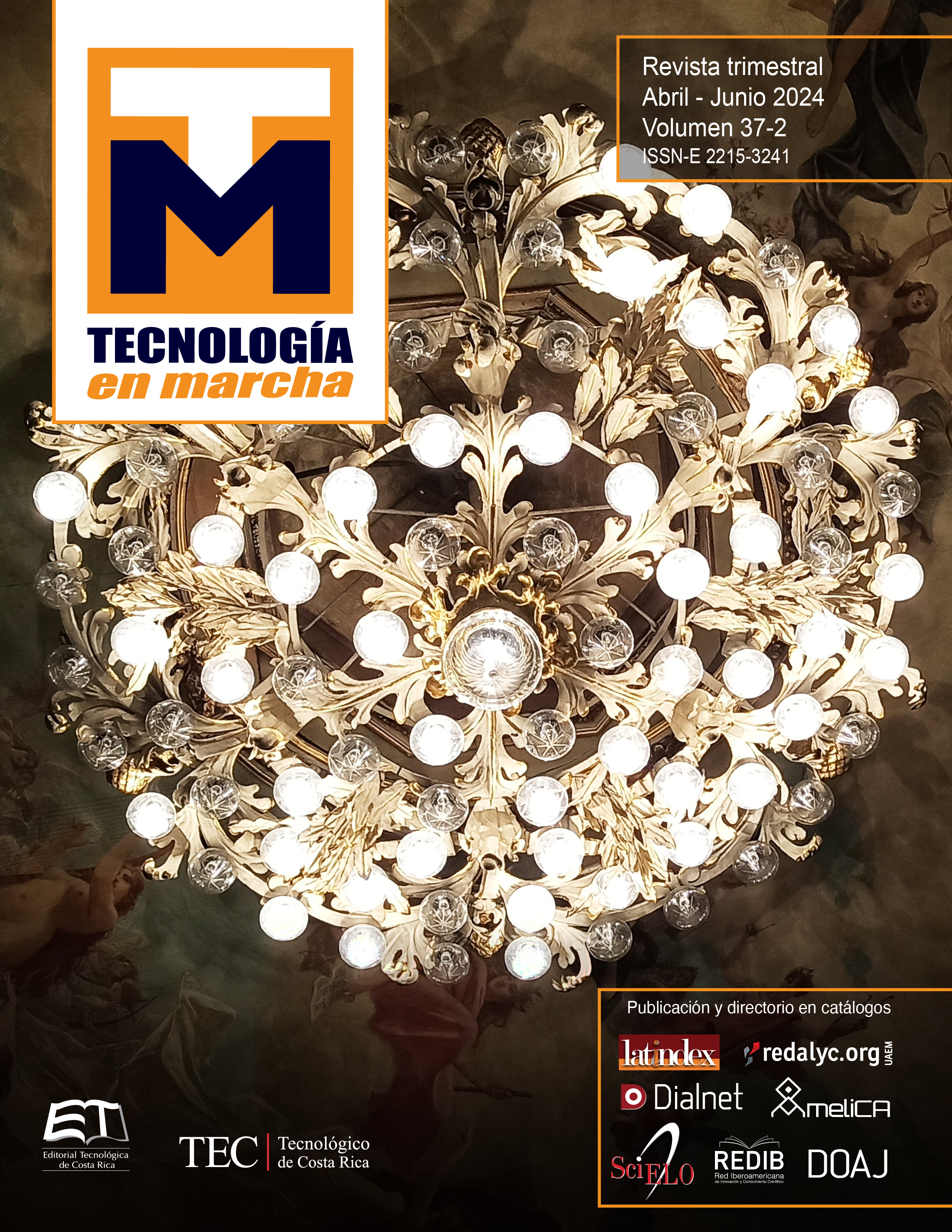Design of a deposition system for a ferromagnetic pheromone from a mobile robot for swarm robotics
Main Article Content
Abstract
This paper presents the design, implementation, and validation of a deposition system for a ferromagnetic pheromone. The project originates from the necessity of a bio-inspired communication method, like pheromones, on a swarm of mobile robots. This was desired to achieve a collective behavior due to the interaction of several robots. The designed system was able to deposit pheromone drops of 6mm in diameter, with a 1.5% error and a magnetization time of 30 minutes, by using a Robotino robot.
Article Details

This work is licensed under a Creative Commons Attribution-NonCommercial-NoDerivatives 4.0 International License.
Los autores conservan los derechos de autor y ceden a la revista el derecho de la primera publicación y pueda editarlo, reproducirlo, distribuirlo, exhibirlo y comunicarlo en el país y en el extranjero mediante medios impresos y electrónicos. Asimismo, asumen el compromiso sobre cualquier litigio o reclamación relacionada con derechos de propiedad intelectual, exonerando de responsabilidad a la Editorial Tecnológica de Costa Rica. Además, se establece que los autores pueden realizar otros acuerdos contractuales independientes y adicionales para la distribución no exclusiva de la versión del artículo publicado en esta revista (p. ej., incluirlo en un repositorio institucional o publicarlo en un libro) siempre que indiquen claramente que el trabajo se publicó por primera vez en esta revista.
References
C. Calderon-Arce y R. Solis-Ortega, “Swarm Robotics and Rapidly Exploring Random Graph Algorithms Applied to Environment Exploration and Path Planning,” International Journal of Advanced Computer Science and Applications, vol. 10, n.o 5, 2019. doi: 10.14569/IJACSA.2019.0100586.
R. Fujisawa, S. Dobata, K. Sugawara, et al. “Designing pheromone communication in swarm robotics: Group foraging behavior mediated by chemical substance.” Swarm Intelligence, vol. 8, no. 3, pp. 227–246, Sep. 2014. Consultado: 11-Sep-2022. DOI: 10.1007/s11721-014-0097-z.
Heylighen, F. Stigmergy as a universal coordination mechaism I: Definition and components. Cogn. Syst. Res. 2016, 38, 4–13.
J.C. Brenes-Torres, F. Blanes, J. Simo, “. Magnetic Trails: A Novel Artificial Pheromone for Swarm Robotics in Outdoor Environments.” Computation, vol. 10, no. 6, Jun., pp. 98, 2022.
Karras, U. (2009). Robotino–an open learning mobile robot system for robocup.
M. Yogeswaran, S. G. Ponnambalam. (2010). An Extensive Review of Research in Swarm Robotics. Presentado en Nature & Biologically Inspired Computing, 2009. NaBIC 2009.
Calderón-Arce, C., Brenes-Torres, J. C., & Solis-Ortega, R. (2022). Swarm Robotics: Simulators, Platforms and Applications Review. Computation, 10(6), 80.
I. Navarro, F. Matía, “An Introduction to Swarm Robotics”, Hindawi Publishing Corporation, vol. 2013, no. 1, Ene. 2013. Consultado: 12-Sep-2022. DOI: 10.5402/2013/608164.
A. Hannawati, J. Iskandar y R. A. Russell. (2007), Pheromone Communication Simulation for Mobile Robots Using Java 3D. Presentado en Computer and Information Science, 2007. ICIS 2007. [En línea]. Disponible:
S. Camazine, J.L. Deneubourg, N.R. Franks, et al, Self-organization in biological systems. 1.ed, Princeton, Nueva Jersey, Estados Unidos de América: Princeton University Press, 2003.
I, Susnea, “A Brief History of Virtual Pheromones in Engineering applications”, American Journal of Engineering Research (AJER), vol. 5, no. 3, pp. 70-76, Mar. 2016. Consultado 11-Sep-22.
Salman, M., Garzón Ramos, D., Hasselmann, K., & Birattari, M. (2020). Phormica: Photochromic pheromone release and detection system for stigmergic coordination in robot swarms. Frontiers in Robotics and AI, 7, 591402.
R. Fujisawa, H. Imamura, F. Matsuno. Cooperative transportation by swarm robots using pheromone communication. In Distributed Autonomous Robotic Systems; Springer: Cham, Switzerland, 2013; pp. 559–570.

